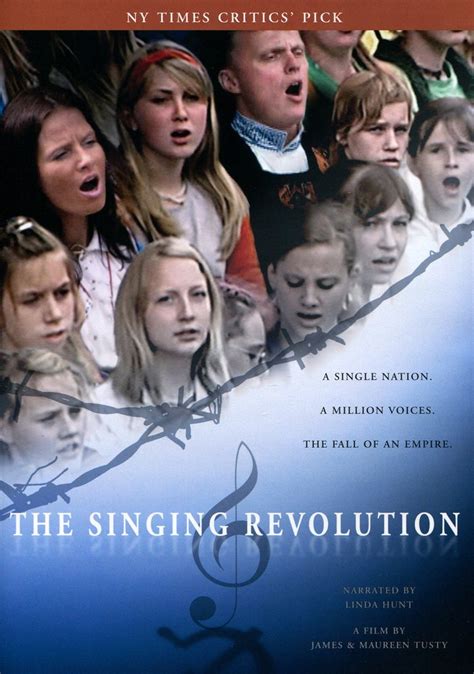The Singing Revolution

Description:
The Singing Revolution is a documentary that tells the inspiring story of Estonia's struggle for freedom from Soviet occupation, centered around the Estonian tradition of mass singing. The film illustrates how a small nation of just over a million people sang their way to a peaceful revolution, using their cultural heritage and choral music as a form of resistance to preserve their identity and achieve independence.Keywords:
Choir, Documentary, History, Music, Revolution, EstoniaWhat was the singing revolution?
The Singing Revolution refers to a peaceful movement in Estonia during the late 1980s, where citizens used songs and choral performances to express their desire for independence from Soviet rule. This cultural revival culminated in large-scale singing events, particularly the Tallinn Song Festival, where thousands gathered to sing national songs. The movement emphasized unity and national identity, ultimately leading to Estonia's restoration of independence in 1991. The phenomenon showcased the power of culture and nonviolent protest in achieving political change.
Was the singing revolution peaceful?
Yes, the Singing Revolution was a peaceful movement. It took place in the late 1980s in Estonia, where citizens gathered to sing national songs and express their desire for independence from Soviet rule. This cultural uprising emphasized unity and non-violent resistance, culminating in the restoration of Estonia's independence in 1991. The movement showcased the power of music and collective identity, highlighting how peaceful demonstrations can effectively bring about significant political change.
Who led the singing revolution?
The Singing Revolution was primarily led by the Estonian people, who united through song and cultural expression to gain independence from Soviet rule between 1987 and 1991. Key figures included politicians like Lennart Meri and the movement's cultural leaders, such as composer Veljo Tormis and the Estonian Song Festival organizers. The movement was characterized by mass singing events where Estonians gathered to sing national songs, fostering a sense of unity and national identity, which played a crucial role in their quest for independence.
What songs were sung during the singing revolution?
"The Singing Revolution" refers to the peaceful movement in Estonia during the late 1980s that led to the country's independence from the Soviet Union. Key songs sung during this period included traditional Estonian folk songs and patriotic anthems like "Mu Isamaa On Minu arm" (My Fatherland is My Love) and "Koit" (Dawn). These songs played a significant role in uniting the people and expressing their desire for freedom. The mass singing events, particularly the Song Festival, became symbols of national identity and resistance.
Explore More Categories:
Space Redemption Camaraderie Crisis Gender Baseball Rescue Infidelity Passion Miscommunication Valor Colombian Setting Cinematography Action Adventure Action Thriller Corporate Corruption Surrealism Mafia Arms Trade Discontent Aliens Science Fiction Thriller Avant Garde British Humor Self Destruction